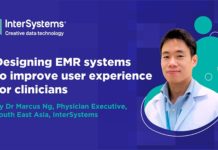Healthcare providers collect massive amounts of data today across a wide array of disciplines, and the data-dependency will only grow.Despite this wealth of data, most healthcare organizations are not effectively using this information to fully benefit patients or themselves. An unprecedented opportunity exists to leverage patient information as well as non-clinical data to support a variety of healthcare functions, including population health management. Let’s explore how a data-driven approach can transform your organization.
In healthcare, a number of trends are converging to make data analytics more important than ever. First, the shear amount of available data is greater and growing rapidly, boosted in part by the increase in electronic health records, sensors, wearables and other technology. Virtually every aspect of the healthcare ecosystem now yields digital data.
In addition, healthcare policy and operations are moving from a provider-centric model to a value based, patient-centric delivery system. One sign of this is the shifting payment structure for physicians in the United States and in other countries. Physicians are now tracked by metrics such as quality, outcome and patient satisfaction, and this often determines reimbursements.
The final trend is patients’ growing awareness of healthcare costs and information.Better-informed, technology-savvy consumers are seeking more personalized attention from physicians, as well as access to their patient records and plans of care.
Keys to improving population health include gaining a better understanding of health patterns and diseases. A study by McKinsey & Company estimates that the healthcare industry could potentially realize $300 billion in annual revenue by leveraging patient and clinical data. In this environment, hospitals, systems and other health-related organizations have the opportunity to leverage actionable data to accomplish three goals: 1) improve patient interactions and outcomes through better-informed decisions, 2) provide patients with a better experience in the healthcare environment, and 3) reduce costs.

Five Key Questions
To put it simply, organizations can start to wrap their minds around this transformational data initiative by formulating and along the way answering these five questions:
1.How can I get to know my patients and their needs?
As organizations focus on strategies, data and technology, it’s important not to forget the patient, and it is imperative to always put the welfare of the patient first. Organizations should remain closely engaged with patients and find ways to interact with them throughout the healthcare journey, through chronic care management. This will improve patient satisfaction and can lead to better health outcomes.
As data analytics helps organizations better understand their patient population, specialized tools can help providers stay ahead of some patient risks, which can reduce costs and incidence of illness. Another outcome is that organizations can stop viewing and classifying patients by disease or illness, instead focusing on the whole person. By applying data analytics, healthcare delivery can become more patient-centric rather than disease-centric.
 2.What is at stake for patients and how does it impact outcomes?
2.What is at stake for patients and how does it impact outcomes?
There’s no question that analytics can be valuable, it is crucial for healthcare organizations to clearly define the challenges that will be solved with a data-driven approach and develop a well-defined strategy to tackle those challenges. Organizations should determine the questions they will aim to solve and the insights they will attempt to derive.
This may include defining and stratifying the patient population, considering factors such as utilization and patient demographics and comparing treatment effectiveness. A strategic partner can play an essential role in this process by helping organizations identify important challenges and priorities, and by helping develop a clear-cut strategy based on experience and proven best practices.
3.How will setting goals improve overall patient experience?
Once a strategy has been developed, the biggest hurdle for healthcare organizations is successfully executing that strategy. Healthcare is a people-focused business, so strategy execution should incorporate all involved, from executive buy-in to those on the front lines, including physicians, specialists and other healthcare professionals. A strategic partner can help
an organization develop a data, governance and information management strategy that details how data will be collected, maintained and protected. Organization leaders should establish and monitor strategic goals and ensure realistic staffing and budgeting.
Once specific goals have been set and a data-driven strategy has been successfully implemented, the benefits are numerous. For one, unraveling the complexities of big data can provide many insights about making the right patient decisions at the right time. Also, patients can benefit from more personalized care. For one health system client, CSC has established a specialized patient co-ordination center that provides integrated services that are high-quality, offer value for the money, and a significantly improved, more personalized patient experience.
 4.Where should I focus to derive insights from numerous data sources?
4.Where should I focus to derive insights from numerous data sources?
Aggregating and integrating data is key to handling it successfully. “Clean,” high-quality data is easier to use and can improve predictive capabilities. Organizations should focus on how to bring data sources together and make them connect to patients to derive insights.
Keep in mind that though providers have a set of clinical data based on electronic health records, there’s a wealth of data that goes beyond the hospitals’ four walls. For example, a patient suffering from weather-related asthma conditions may benefit from a weather alert that could help her get a day or two ahead of the cycle on a prescribed care pathway. Non-clinical data sources such as genomic data, socioeconomic data and more can lead to better analytical insights, and better patient outcomes.
5.What is the right technology to support the road to digital health?
Dealing with mounds of data also means dealing with the technology that enables storage and use. Cloud technology, digital applications, modern platforms and a shared services environment can be smart technology choices for today’s healthcare environment.
This digital approach presents a dramatic change in how information is aggregated, stored and delivered when compared to traditional healthcare IT. But the technologies can improve the way essential services, such as chronic care management, are delivered. It’s likely that the solution will require pulling together an ecosystem of partner technologies, something a strategic partner can help navigate. ne major benefit to technology transformation is that improvements to legacy systems will likely result in reduced operational costs, as well.
A Data Driven Approach for Success
Data analytics plays a key role in helping organizations understand patient populations and gain insights to important factors such as social determinants of health. By asking the five questions detailed here, organizations will be well on their way to undergoing a digital transformation that can bring tremendous benefits to healthcare organizations and practitioners, and most importantly, to patients.
Still, implementing the complex changes needed to undergo a healthcare transformation is difficult. Expert strategic partners can hone in on what matters most and help these organizations navigate the complexities and implement successful, holistic solutions. These partners bring much to the table: knowledge, experience, best practices, healthcare expertise and, for some, next-generation technology. And they can be excellent partners on the path to analytics success.



















